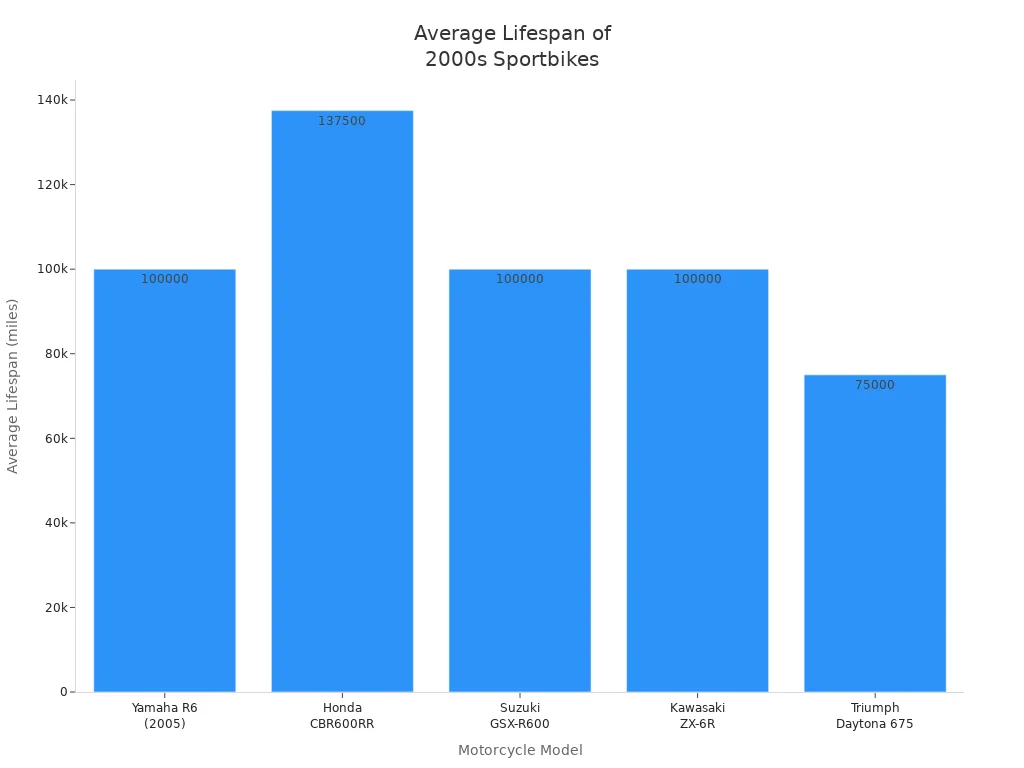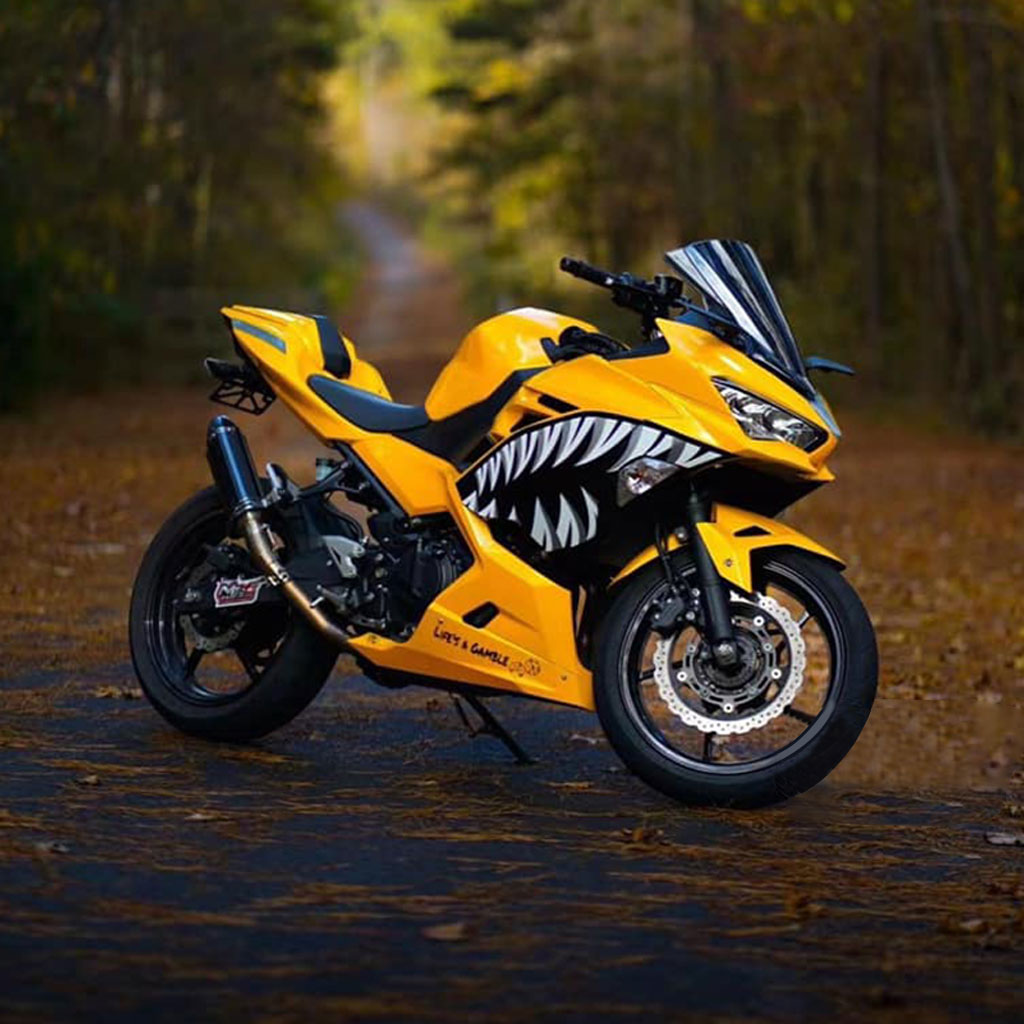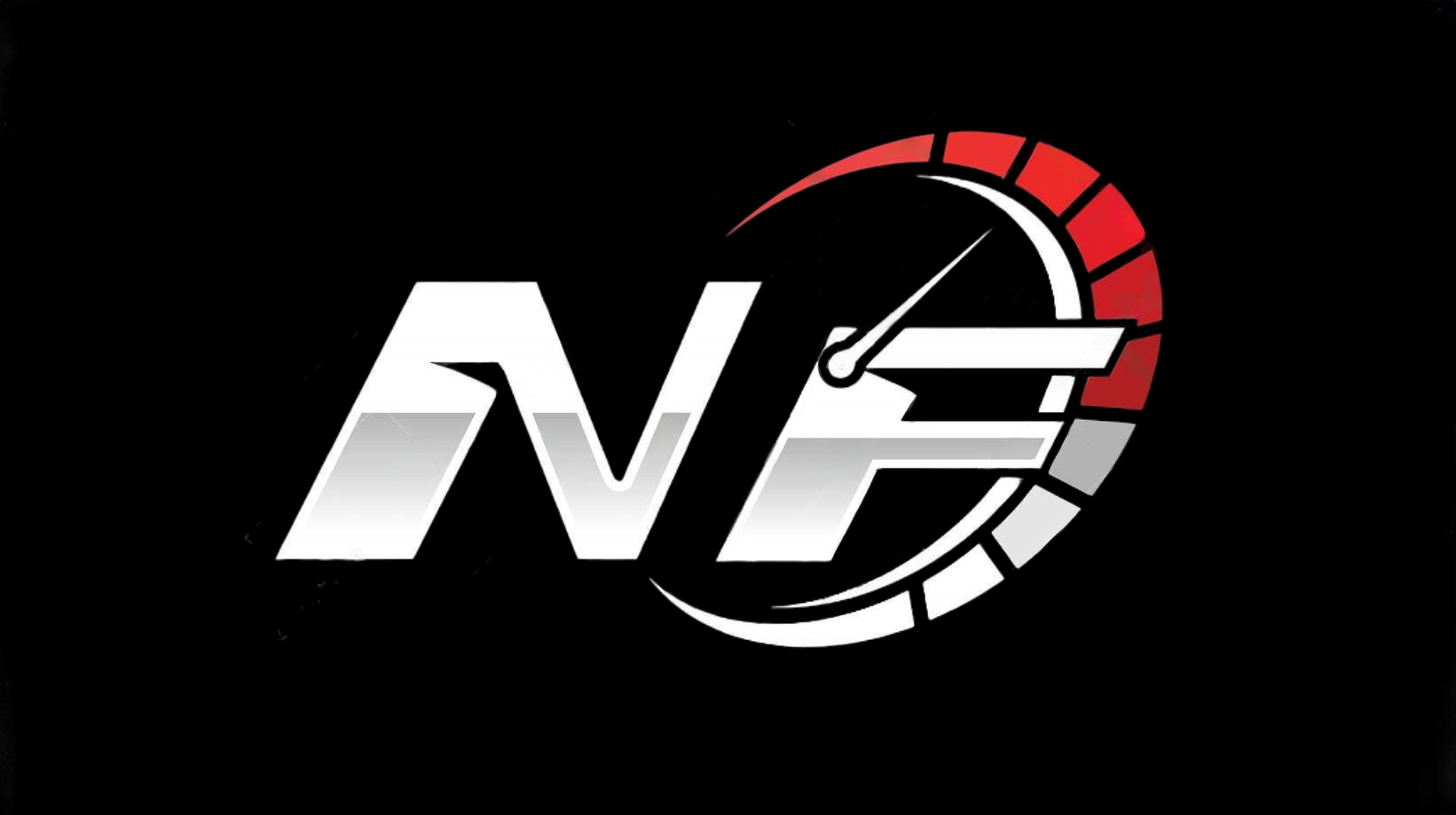Why r6 2005 yamaha stands out even in 2025

Many riders admire the r6 2005 yamaha for its bold look and strong performance. This motorcycle keeps winning fans in 2025. The yamaha engineers built the r6 2005 yamaha with ideas from the famous yamaha r1. Riders notice the smooth ride and sharp handling. Collectors value the yamaha for its unique features. The motorcycle world often compares the r6 2005 yamaha to the yamaha r1. Yamaha stands as a leader in sportbike design. The motorcycle community respects both the yamaha r1 and the r6 for their impact.
r6 2005 yamaha Revolutionary Design
Aerodynamics and Styling Innovations
Yamaha engineers gave the r6 2005 yamaha a bold look that still feels modern in 2025. The motorcycle features a sleek, squat fairing and a stubby, underslung exhaust. These elements help reduce wind resistance and improve stability at high speeds. The design team drew inspiration from the yamaha r1, giving the r6 a sharper and more aggressive appearance. Riders notice the curvier cast swingarm and the new cast-type Deltabox III frame finished in black. These changes not only enhance the motorcycle's visual appeal but also contribute to its aerodynamic efficiency.
The 2005 model stands out with its compact bodywork and narrow fuel tank. These features allow riders to tuck in more easily, reducing drag and improving comfort. The styling aligns closely with the yamaha r1, making the r6 a favorite among supersport fans who appreciate both form and function. The revised under-cowl design and new side stand specification further refine the motorcycle's silhouette, showing Yamaha's attention to detail.
Engine and Performance Upgrades
Yamaha made significant upgrades to the engine and performance of the 2005 model. The yamaha yzf-r6 received larger throttle bodies, increasing from 38 mm to 40 mm. The fuel injection system was revised with higher fuel pressure and optimized ignition mapping. New camshafts and redesigned intake funnels, with a wider mouth and shorter length for cylinders 1 and 4, improved airflow and combustion. These changes raised the power output by about 3 horsepower, reaching 123 hp at 13,000 rpm. The torque delivery became more linear, especially in the mid-speed range, making the motorcycle easier to control during acceleration.
Here is a summary of the key engine and performance upgrades:
| Specification / Upgrade | 2005 Yamaha R6 Details |
|---|---|
| Throttle Body Diameter | Increased from 38 mm to 40 mm |
| Fuel Injection System | Revised with increased fuel pressure and optimized injection and ignition mapping |
| Camshafts | New camshafts introduced |
| Intake Funnels | Redesigned with wider funnel mouth and shortened length for cylinders 1 and 4 |
| Power Output | Increased by about 3 hp to 123 hp at 13,000 rpm |
| Torque Characteristics | Improved linear torque across rpm range, especially mid-speed range |
| Radiator Fans | Twin ring-type fans replaced single fan for better cooling |
| Exhaust System | New four-into-two-into-one aluminum exhaust system for optimized performance and reduced weight |
Yamaha also improved the cooling system by adding twin ring-type radiator fans. The new four-into-two-into-one aluminum exhaust system reduced weight and enhanced engine output. These upgrades set a new standard for supersport motorcycles in the 600cc class. The r6 delivered competitive performance, even when compared to larger bikes like the yamaha r1 and the Suzuki GSX-R1000. Although the GSX-R1000 had much higher horsepower, the r6 often matched or beat it on tight tracks due to its agility and rider confidence.
Chassis and Handling Improvements
Yamaha focused on making the 2005 r6 both stable and agile. The motorcycle received a new Deltabox III frame with revised rigidity balance. The front fork changed from a 43 mm conventional fork to a 41 mm upside-down Kayaba fork. This upgrade increased front-end rigidity and improved steering precision. The front brakes featured radial-mount 4-piston Sumitomo calipers and a Brembo radial master cylinder, with larger 310 mm discs. These changes gave riders stronger braking power and better control during hard stops.
The rear suspension used a more progressive linkage, raising the seat height by 10 mm and increasing the leverage ratio. Firmer spring and damping rates improved the motorcycle's response and balance. Yamaha also adjusted the geometry by increasing the rake and trail and extending the wheelbase. These changes maintained stability while enhancing handling. The front tire size increased from a 60-series to a 70-series Dunlop D218, greatly improving front-end feel and turn-in.
Riders found the 2005 r6 planted and confident at high lean angles and under hard braking. The motorcycle handled quick direction changes with ease, even on stock street tires. Yamaha's improvements made the r6 a favorite for both track and street use, offering a blend of comfort, precision, and performance.
The 2005 model bridged the gap between earlier r6 versions and the more extreme supersport machines that followed. Yamaha's focus on chassis and handling made the r6 a well-rounded motorcycle, balancing track performance with road usability. The influence of the yamaha r1 is clear in every aspect, from the frame design to the suspension setup.
Technological Advancements
The 2005 yamaha r6 introduced several important technological advancements that changed the way riders and engineers viewed sportbikes. Many of these features first appeared on this motorcycle and later influenced other models, including the yamaha r1.
Yamaha engineers focused on improving both performance and safety. They added new parts and systems that made the motorcycle faster, easier to control, and more reliable. The 2005 model became a leader in technology, setting a high standard for the years that followed.
- The motorcycle used an inverted front fork. This design allowed for adjustments to both high- and low-speed compression damping. Riders could fine-tune the suspension for different road or track conditions. The yamaha r1 later adopted this feature, showing its value.
- Yamaha installed radial four-piston brake calipers. These brakes gave the motorcycle stronger stopping power and better control. The yamaha r1 also used this braking system in later years.
- The engine received a titanium EXUP valve in the midship exhaust system. This part allowed longer cam timing and supported a very high redline of 17,500 rpm. The motorcycle reached higher peak power, which made it stand out among other sportbikes. The yamaha r1 benefited from similar engine technology.
- A dual butterfly throttle system appeared on the 2005 model. The computer-managed secondary throttle butterfly helped optimize the fuel and air mixture at high rpm. This system improved throttle response and made the motorcycle smoother to ride. The yamaha r1 later used this system as well.
- The motorcycle featured aerodynamic design elements inspired by MotoGP. Yamaha added 'barge boards' to manage airflow around the bike. These changes reduced drag and improved stability at high speeds. The yamaha r1 took inspiration from these features.
- Yamaha used a banana-style controlled-fill swingarm made with a thinwall aluminum casting process. This swingarm reduced weight and increased strength. The motorcycle handled better and felt lighter in turns. The yamaha r1 also used this swingarm design in later models.
- The 2005 model had a forward weight bias. This setup improved steering and control. It helped counteract wheelies caused by the motorcycle's increased power. The yamaha r1 adopted this idea to improve its own handling.
Many riders and experts agree that the 2005 yamaha r6 changed the sportbike world. The motorcycle's new features made it a favorite for both racing and everyday riding. The yamaha r1, known for its power and speed, gained many of these advancements after seeing their success on the r6.
The 2005 yamaha r6 stands as a symbol of innovation. Its technological advancements continue to shape the design and performance of modern motorcycles. Riders in 2025 still see the impact of these changes, especially when comparing the r6 to the yamaha r1 and other top sportbikes.
Lasting Impact of the 2005 yamaha r6 in 2025
Influence on Modern Sportbikes
The 2005 Yamaha R6 changed the way engineers and riders think about sportbikes. Many features first seen on this motorcycle now appear on modern motorcycles. The upside-down fork, once only found on race bikes, became a standard part of many new models. Radially-mounted calipers and a radial brake master cylinder improved stopping power and control. Larger front brake discs, increased from 298 mm to 310 mm, set a new benchmark for braking systems.
- The 2005 R6 introduced:
- Upside-down (inverted) fork for better suspension.
- Radially-mounted calipers and a radial brake master cylinder.
- Larger front brake discs for stronger stopping power.
- A focus on sharp handling and track-ready performance.
These changes influenced the design of sportbikes released after 2010. Engineers started to prioritize handling and braking, not just engine power. The 2005 R6 showed that a motorcycle could offer both speed and control. Many modern superbikes, including the Yamaha R1, now use similar suspension and braking systems. Riders today expect these features as standard.
The 2005 R6 set new standards for handling and performance. Its design choices shaped the direction of sportbike engineering for years to come.
Comparison with Current Motorcycles
In 2025, modern Yamaha motorcycles include advanced electronics. Features like traction control, multiple ride modes, and sophisticated ABS systems help riders stay safe and adapt to different conditions. New engine designs use crossplane crankshafts and refined fuel injection systems. These updates improve torque delivery and make the ride smoother.
The 2005 R6 focused on raw power and high-revving performance. It did not have electronic rider aids. The chassis and suspension were advanced for their time, but modern motorcycles now offer more stable and predictable handling. Riders feel more confident and comfortable on new models.
- The 2005 R6 produced about 105 hp, making it one of the most powerful 600cc supersports of its time.
- It was known for its comfort and street manners, even though it was demanding at the racetrack.
- The 2006 model increased power and focused more on racetrack performance.
- Modern sportbikes, including the Yamaha R1 and YZF-R7, use advanced electronics and improved chassis for better comfort and safety.
- Today’s motorcycles are easier to ride in different conditions and offer a more balanced experience.
The 2005 R6 was a leader in its era. It set the bar for superbike performance. Modern motorcycles now offer more technology and usability, but the spirit of the 2005 R6 lives on in the Yamaha R1 and other top models.
Enduring Performance and Ride Quality
The 2005 Yamaha R6 continues to impress riders in 2025. Its engine, a liquid-cooled, 16-valve Genesis in-line four, delivers strong low- and mid-range power. The six-speed transmission shifts smoothly, making the motorcycle easy to control. Yamaha’s Deltabox frame gives the bike a solid feel on the road.
The fully adjustable front and rear suspension allows riders to fine-tune the ride. The wide, plush seat and slightly rearset footpegs create a comfortable yet sporty position. The tall fairing offers good wind protection. These features help the R6 balance aggressive performance with real-world comfort.
Many riders still choose the 2005 R6 for its unique ride quality. The motorcycle feels stable and precise, even after many years. The original engineering focused on both capability and comfort. This balance remains effective and relevant in 2025.
Riders appreciate how the 2005 R6 combines performance and comfort. The motorcycle stands as a testament to Yamaha’s commitment to quality and innovation. The influence of the Yamaha R1 is clear, as both models continue to set standards for superbike excellence.
r6 Collector’s Appeal and Value

Rarity and Value Growth
Collectors often seek the 2005 model because of its unique place in sportbike history. This motorcycle stands out for its limited production numbers and its influence on the yamaha r1. Over the years, the value of this motorcycle has increased, especially for well-maintained examples. Many collectors notice that the 2005 model introduced features that later appeared on the yamaha r1, making it a milestone for the brand. The motorcycle’s advanced technology and bold design attract those who want a piece of sportbike evolution. As demand rises, collectors see steady value growth, especially for original or low-mileage motorcycles.
Enthusiast Community and Sentiment
A strong community supports the 2005 model, helping collectors find information and parts. The Yamaha R6 Forum (r6-forum.com) remains the most popular place for discussion. The table below shows the activity level in this community:
| Metric | Details |
|---|---|
| Members | Over 115,000 |
| Total Posts | More than 3.1 million since 2003 |
| Threads | Approximately 196,562 |
| Activity | Top contributors post dozens of replies monthly |
| Discussion Topics | Performance, modifications, troubleshooting, maintenance |
| Features | Marketplace, showcase, gallery, active recent threads |
| Popularity | Most popular and dedicated Yamaha R6 community |
Collectors share their experiences and advice, making it easier to keep these motorcycles running. Many riders praise the 2005 model for its modern looks and high performance. They describe it as a "delight to look at" and a "lust" for riders. The motorcycle’s features, such as the slipper clutch and adjustable suspension, make it ready for both street and track. Collectors appreciate that the motorcycle can compete with the yamaha r1 and other top sportbikes without heavy upgrades. The aerodynamic design, including the wing on the side panel, adds to its appeal. Some riders express curiosity about the reliability of the fly-by-wire throttle, but most agree the motorcycle offers a satisfying experience.
Maintenance and Longevity
Collectors know that proper care is key to keeping the 2005 model valuable. The most common maintenance issue is fuel pump failure. Symptoms include hard starting, engine sputtering, and loss of power at high RPM. Regular checks and using high-quality fuel help prevent these problems. Repairing the fuel pump can cost between $250 and $500 for parts, plus labor. Preventative steps, such as keeping the tank full and replacing the fuel filter, extend the motorcycle’s life.
The average lifespan for this motorcycle is about 100,000 miles, which matches other sportbikes from the same era. The chart below compares the lifespan of the 2005 model to its peers:

Collectors who follow maintenance guidelines can expect reliable performance. The 2005 model may not match the long-distance comfort of the yamaha r1, but it offers agility and speed. With proper care, collectors enjoy both the thrill of riding and the satisfaction of owning a piece of yamaha r1 history.
The r6 2005 yamaha stands out in 2025 for its innovation and influence. Experts in 2025 recall their first ride as thrilling and call it a benchmark for sportbike fans.
- The 2005 model set standards that even the latest yamaha r1 models follow.
- Yamaha r1 designers use the R6’s wheels and frame ideas today.
- Journalists say the R6’s handling and racing success make it a legend.
- Riders still compare every new yamaha r1 to the 2005 R6.
- The R6’s unique ride and history keep it popular with collectors and racers.
- Many believe no other yamaha r1 can replace the R6’s special place in sportbike history.
FAQ
What makes the 2005 Yamaha R6 special in 2025?
The 2005 Yamaha R6 stands out for its advanced design, strong performance, and lasting influence on sportbikes. Collectors and riders value its unique features and history. Many see it as a benchmark for both style and engineering.
Is the 2005 Yamaha R6 a good choice for new riders?
Most experts recommend the 2005 R6 for experienced riders. The motorcycle offers sharp handling and high power. New riders may find it challenging to control. Safety training and practice help improve riding skills.
How does the 2005 R6 compare to modern sportbikes?
Modern sportbikes use more electronics, like traction control and ride modes. The 2005 R6 relies on mechanical skill and rider input. Many riders enjoy its raw, direct feel. The R6 still competes well in handling and speed.
What are common maintenance issues with the 2005 Yamaha R6?
Owners often report fuel pump problems and worn brake pads. Regular oil changes and chain care keep the motorcycle running well. Using quality parts and following the service schedule helps extend its lifespan.
Tip: Keeping maintenance records increases the motorcycle’s value for collectors.
See Also
Key Features That Highlight The 2025 Yamaha R7
Top Six Stylish Motorcycles Perfect For New Riders 2025
How Rebuilt Bikes Are Changing Style And Price In 2025

